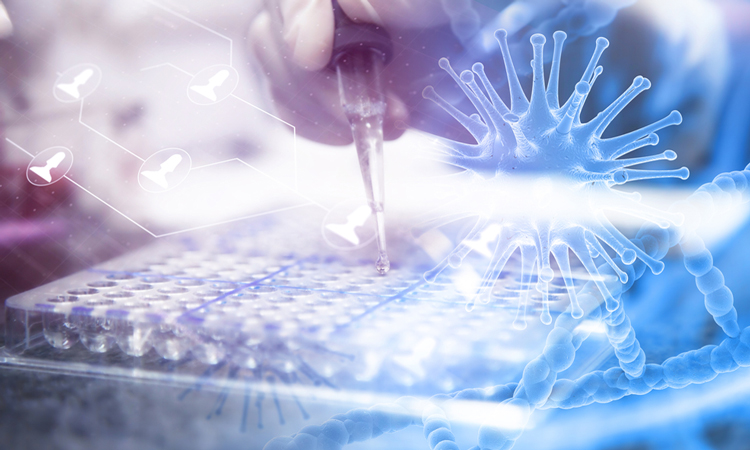Second patient cured of HIV using stem cell therapy
Posted: 11 March 2020 | Victoria Rees (European Pharmaceutical Review) | 1 comment
Researchers report that a patient who underwent stem-cell transplantation and a chemotherapy drug regimen has been cured of HIV.


An HIV patient to undergo stem cell transplantation from donors with a HIV-resistant gene no longer suffers from the condition, according to a new study. Researchers reveal that there was no active viral infection in the patient’s blood 30 months after they stopped anti-retroviral therapy, making him the second person cured of HIV.
However, they report that although there was no active viral infection in the patient’s body, remnants of integrated HIV-1 DNA remained in tissue samples, which were also found in the first patient to be cured of HIV. The authors suggest that these can be regarded as so-called ‘fossils’, as they are unlikely to be capable of reproducing the virus.
“We propose that these results represent the second ever case of a patient to be cured of HIV. Our findings show that the success of stem cell transplantation as a cure for HIV, first reported nine years ago in the Berlin patient, can be replicated,” said lead author on the study, Professor Ravindra Kumar Gupta at the University of Cambridge, UK.
The London and Berlin patient are examples of using the CCR5 gene in curative therapies outside of gene editing”
He emphasised that as a high-risk treatment, this therapy is unlikely to be offered widely to patients with HIV who are on successful antiretroviral treatment.
In 2011, a patient based in Berlin (the ‘Berlin patient’) was the first HIV patient to be reportedly cured of the virus three and half years after undergoing similar treatment. This therapy included total body irradiation, two rounds of stem cell transplant from a donor who carried a CCR5Δ32/Δ32 gene, which is resistant to HIV and finally a chemotherapy drug regimen. The transplant aimed to make the virus unable to replicate in the patient’s body, whilst the body irradiation and chemotherapy targeted any residual HIV virus.
The patient reported in this study (the ‘London patient’), underwent one stem-cell transplantation and a reduced-intensity chemotherapy drug regimen, without whole body irradiation. In 2019, it was reported that his HIV was in remission and the new study provides follow-up viral load blood test results at 30-months, as well as a modelling analysis to predict the chances of viral re-emergence.
Ultrasensitive viral load sampling from the London patient’s cerebrospinal fluid, intestinal tissue or lymphoid tissue was taken at 29 months after interruption of antiretroviral therapy (ART) and viral load sampling of his blood at 30 months. At 29 months, CD4 cell count (indicators of immune system health and stem cell transplantation success) was measured and analysed to identify the extent to which the patient’s immune cells have been replaced by those derived from the transplant.
The results showed no active viral infection was detected in samples of the patient’s blood at 30 months or in his cerebrospinal fluid, semen, intestinal tissue and lymphoid tissue 29 months after stopping ART. The patient also had a healthy CD4 cell count, suggesting he recovered well from the transplant, with his CD4 cells replaced by cells derived from the HIV-resistant transplanted stem cells. Furthermore, 99 percent of his immune cells were derived from the donor’s stem cells, indicating the stem-cell transplant had been successful.
The authors highlight that their case study of the London patient represents a step towards a less intensive treatment approach. They suggest that the long-term remission of HIV can be achieved using reduced intensity drug regimens, with one stem cell transplant (rather than two) and without total body irradiation.
However, being only the second reported patient to undergo this experimental treatment successfully, the authors note that that the London patient will need continued, but much less frequent, monitoring for re-emergence of the virus.
Speculating on what their results might mean for future developments of HIV cures that utilise the CCR5 gene, co-author on the study, Dr Dimitra Peppa at the University of Oxford, UK, said: “Gene editing using the CCR5 has received a lot of attention recently. The London and Berlin patient are examples of using the CCR5 gene in curative therapies outside of gene editing. There are still many ethical and technical barriers – eg, gene editing, efficiency and robust safety data – to overcome before any approach using CCR5 gene editing can be considered as a scalable cure strategy for HIV.”
The study was published in The Lancet HIV.
Related topics
Biologics, Biopharmaceuticals, Clinical Development, Clinical Trials, Research & Development (R&D), Stem Cells, Therapeutics, Viruses










I’m praying that my brother will get this treatment.